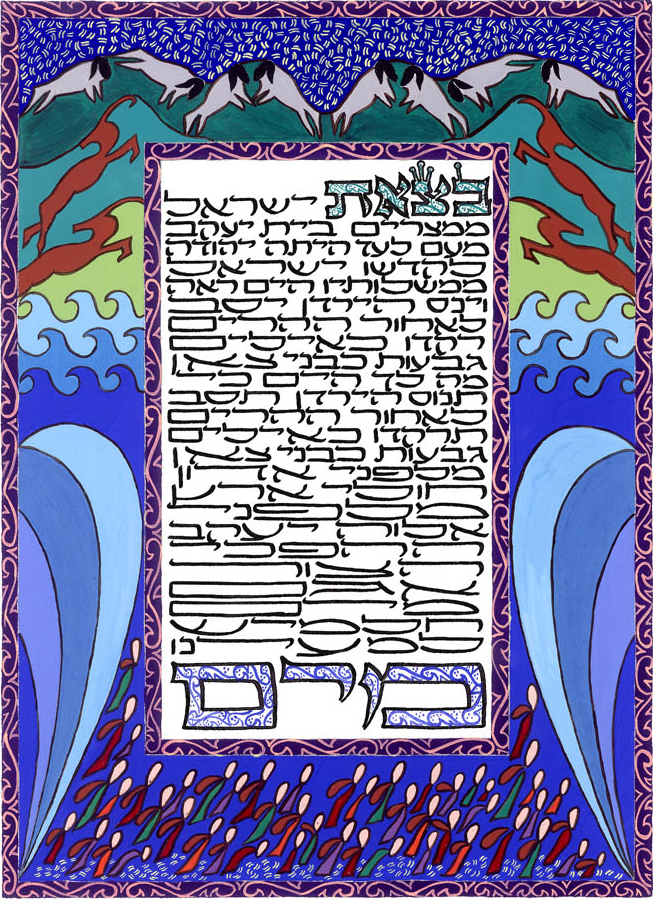Israel’s Departure


© 2008 Rabbi Matthew L. Berkowitz,
The Lovell Haggadah (Plate 19)
Rabbi Judah said to Rabbi Meir: one tribe said, “I will not be the first to go into the sea”; and another tribe said, “I will not be the first to go into the sea.” While they were standing there deliberating, Nahshon the son of Aminadav of the tribe of Judah sprang forward and was the first to go down into the sea. Because it was Nahshon who came forward, Judah obtained royal dominion in Israel: “The sea saw him and fled” (Psalm 114:3). (Mekhilta Derabbi Yishmael, Beshallah, Mas. Devayehi 5)
Like Psalm 114, which is calligraphed in this illumination, this visual essay is filled with movement: Hills dance like gazelles and lambs. The sea parts as the Israelites pass through on the sandy seabed. All of creation dances at the joy of impending freedom after some four hundred and thirty years of enslavement. Darkness is over and light mixed with vibrant colors animates the moment. Midrashim offer various opinions regarding exactly how the waters parted; this rendering follows the literal text from Exodus 14:29, והמים להם חמה מימינם ומשמאלם “The waters were like a wall for them [the Israelites] to their right and to their left.” The vertical transition from sea to hills to sky evokes the themes of creation and separation simultaneously. Indeed, the parting of the Reed Sea is a moment of awe, radical uncertainty, and endless potential.



